Apollo 14: NASA's 'Rookie' Astronauts Bring Golf to the Moon (Photos)
Lunar Boulder Field
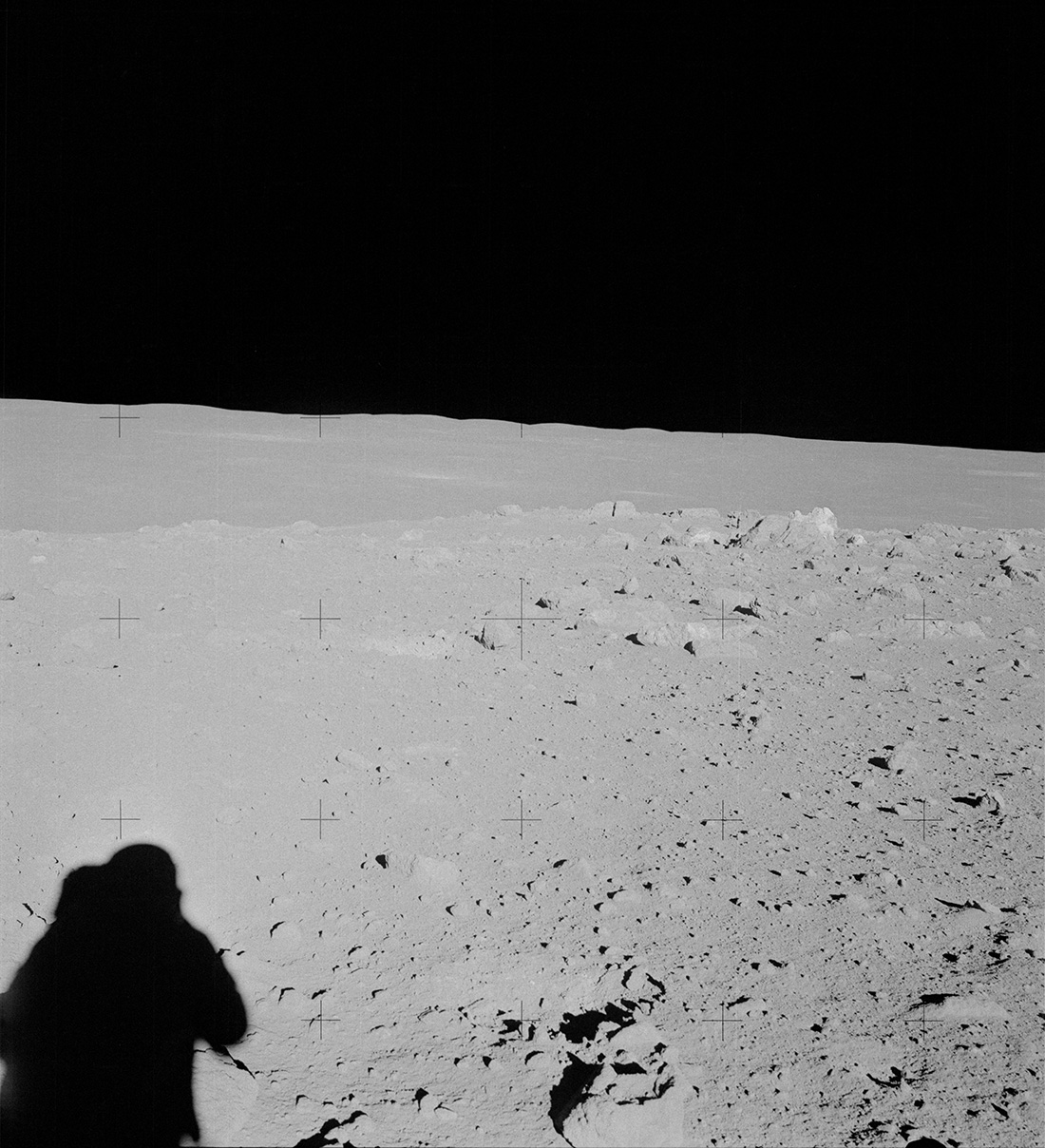
On Feb. 6, 1971, an Apollo 14 astronaut captured this image of a boulder field near Cone Crater.
Cone Crater Boulder Field

On the flank of Cone Crater, astronaut Alan B. Shepard, Jr., captured this view of a field of boulders during the second Apollo 14 moonwalk.
'Big Bertha'
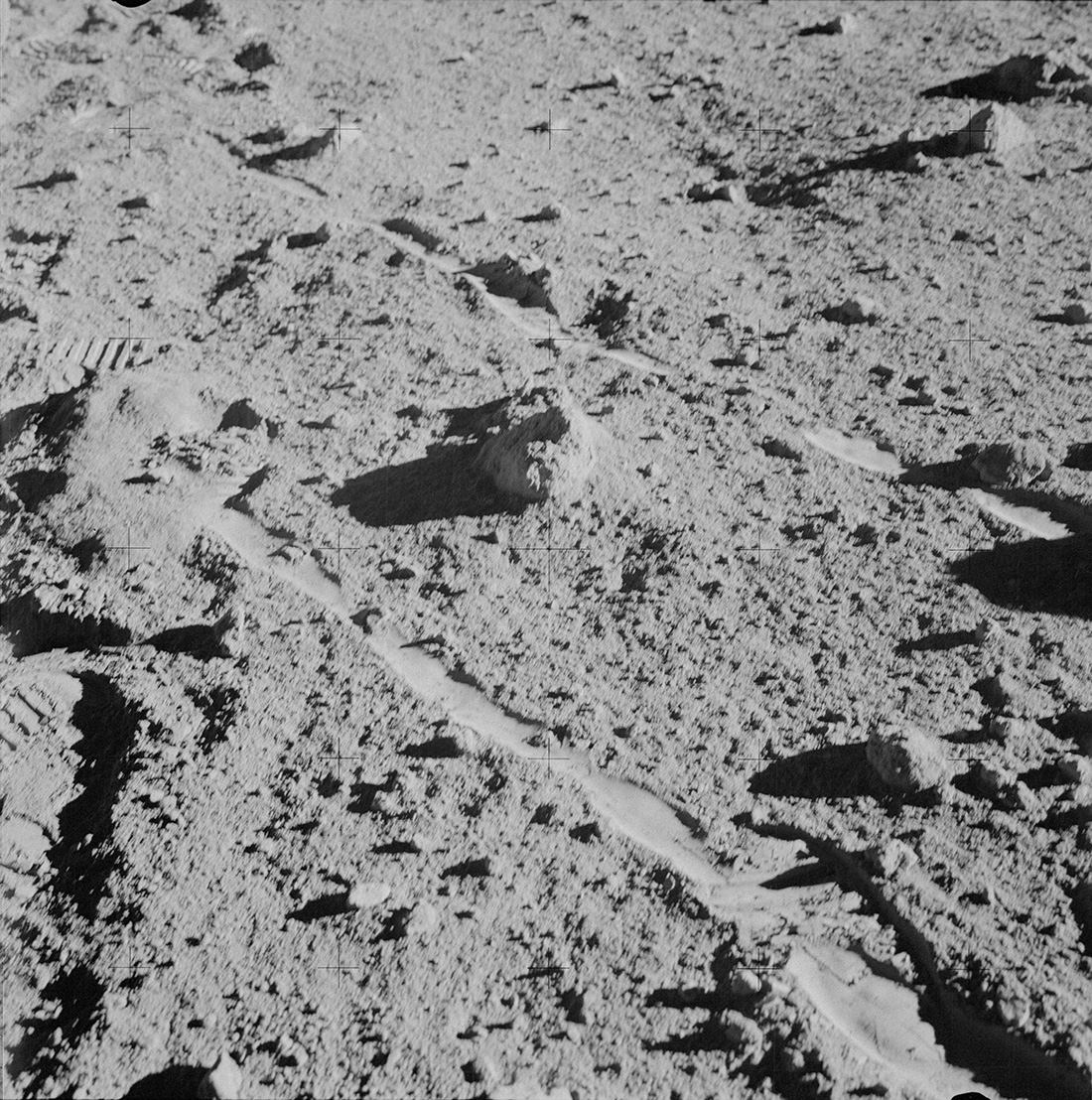
Apollo 14's two moon-exploring astronauts recorded details about this large boulder near the rim of Cone Crater. The astronauts retrieved the rock for further study on Earth.
The large rock, about the size of a basketball, was nicknamed "Big Bertha." In the image, "Big Bertha" lies within tracks made by the "rickshaw."
Planting A Flag
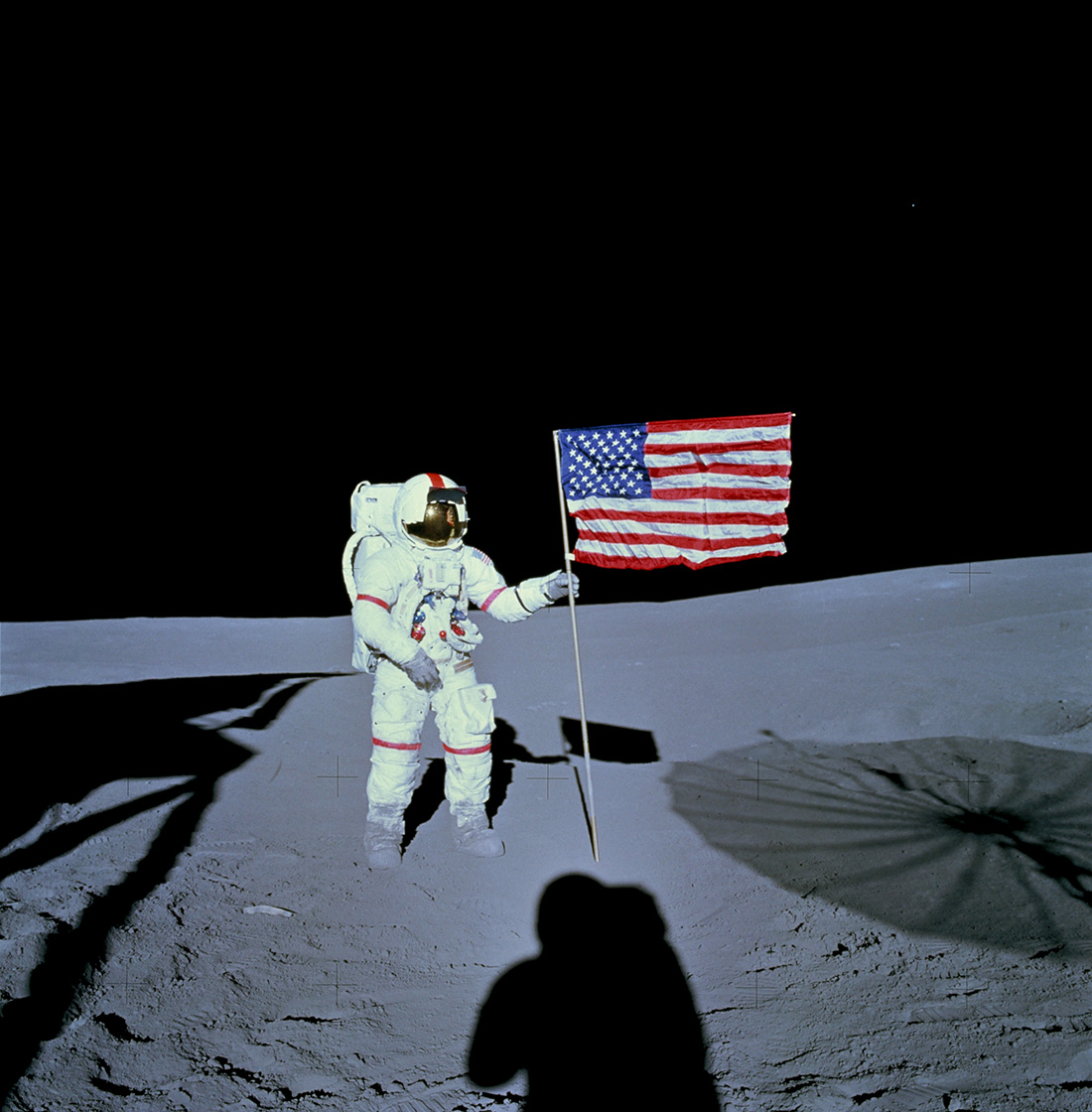
On the lunar Fra Mauro Highlands, Apollo 14 Cmdr. Alan B. Shepard, Jr., stands with the U.S. flag during his first moonwalk. In the image, shadows of the lunar module Antares (left), astronaut Edgar D. Mitchell and the S-band Antenna (right) surround the moonwalker.
From Antares
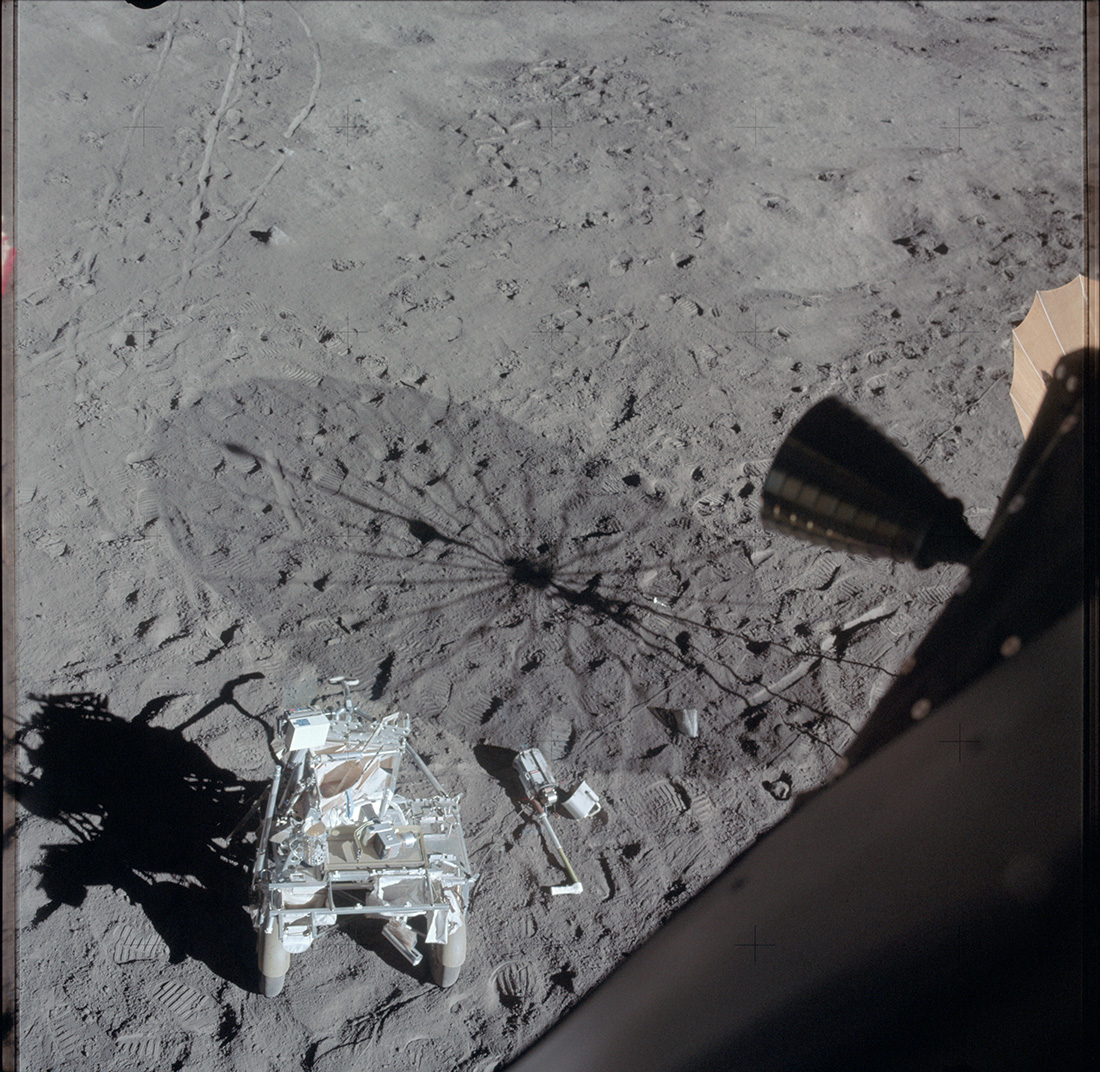
After astronauts Alan B. Shepard, Jr., and Edgar D. Mitchell completed the second Apollo 14 moonwalk, one of the astronauts captured this image of the lunar surface from inside the lunar module Antares. In the foreground, from left to right, the "rickshaw" sits after a work-filled EVA, and the 35-mm stereo close-up camera lies on the lunar surface near the shadow of the S-Band Antenna. Boot prints from the astronauts and tracks from the MET are visible across the image.
Leaving the Lunar Surface

On Feb. 6, 1971, the Apollo 14 lunar module Antares ascent stage rises from the lunar surface. The lunar module engine created a brief wind at liftoff, scattering gold-colored foil and agitating the U.S. flag.
Returning to Kitty Hawk
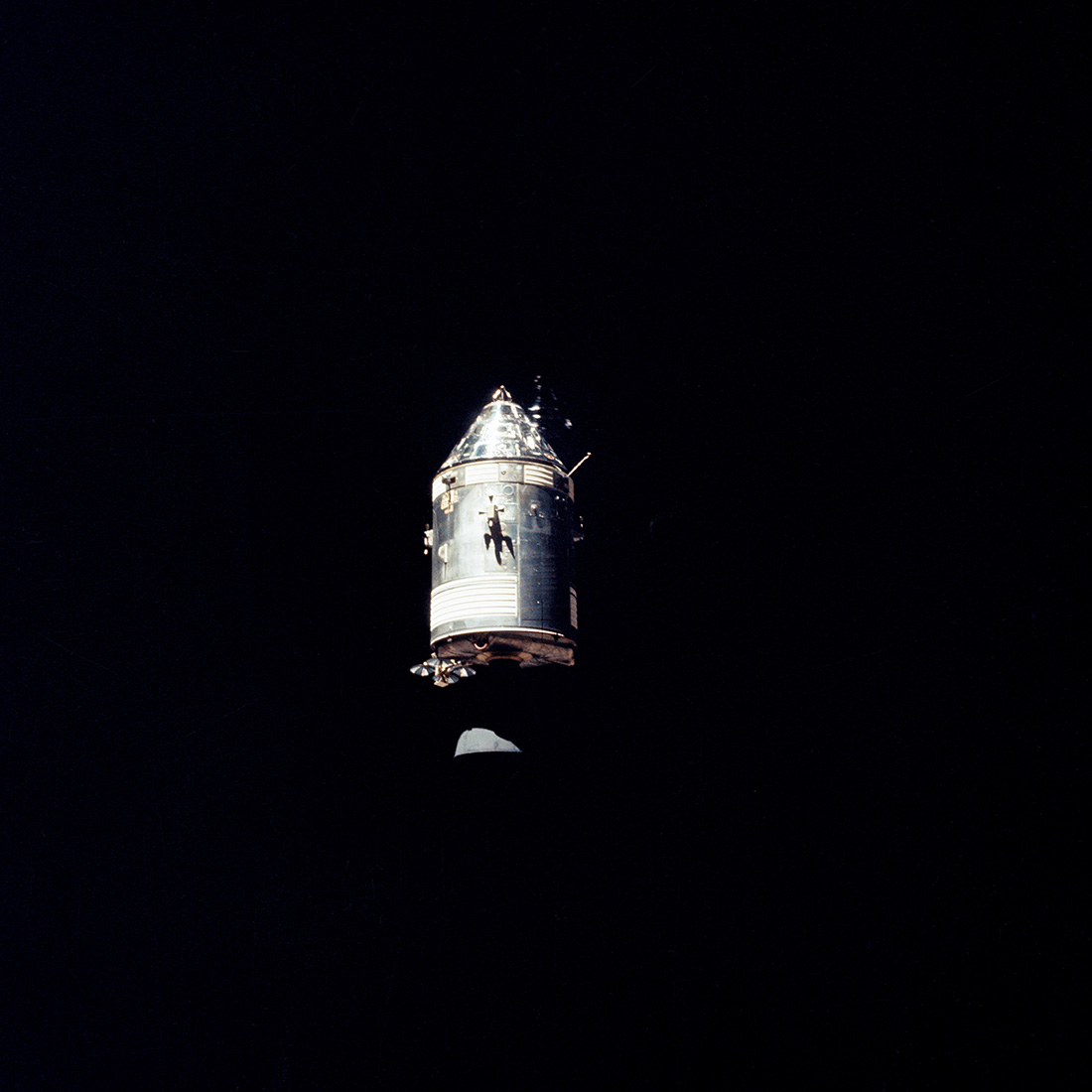
As astronauts Alan B. Shepard, Jr., and Edgar D. Mitchell return from exploring the Fra Mauro region of the moon's surface, this is their view of the Apollo command/service module "Kitty Hawk," where astronaut Stuart M. Roosa awaits their return.
Get the Space.com Newsletter
Breaking space news, the latest updates on rocket launches, skywatching events and more!
Homeward Bound
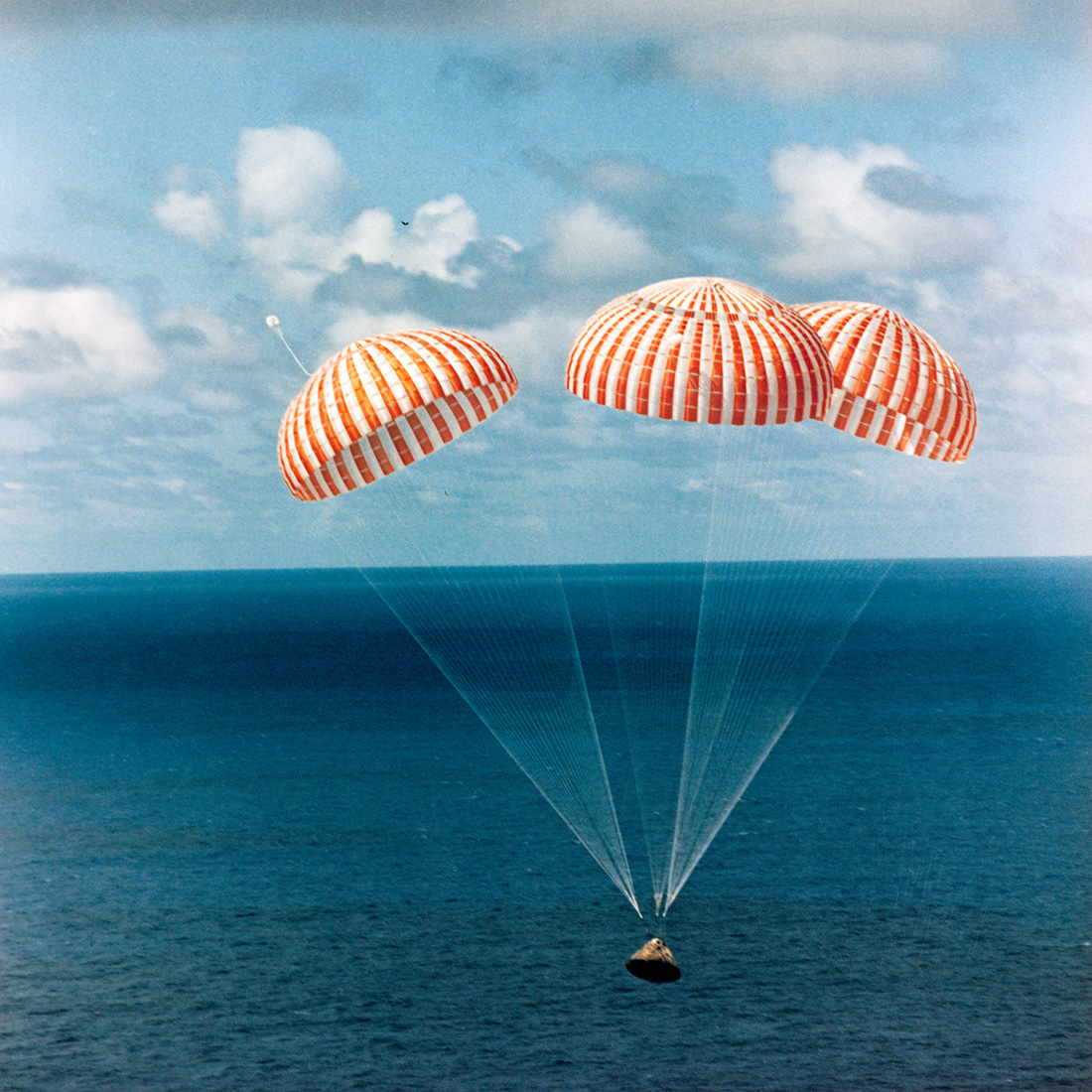
On Feb. 9, 1971, "Kitty Hawk," the Apollo 14 command module, returned to Earth in the South Pacific Ocean, successfully ending the 10-day lunar landing mission. Splashdown occurred less than 800 nautical miles south of American Samoa.
Leaving the Module
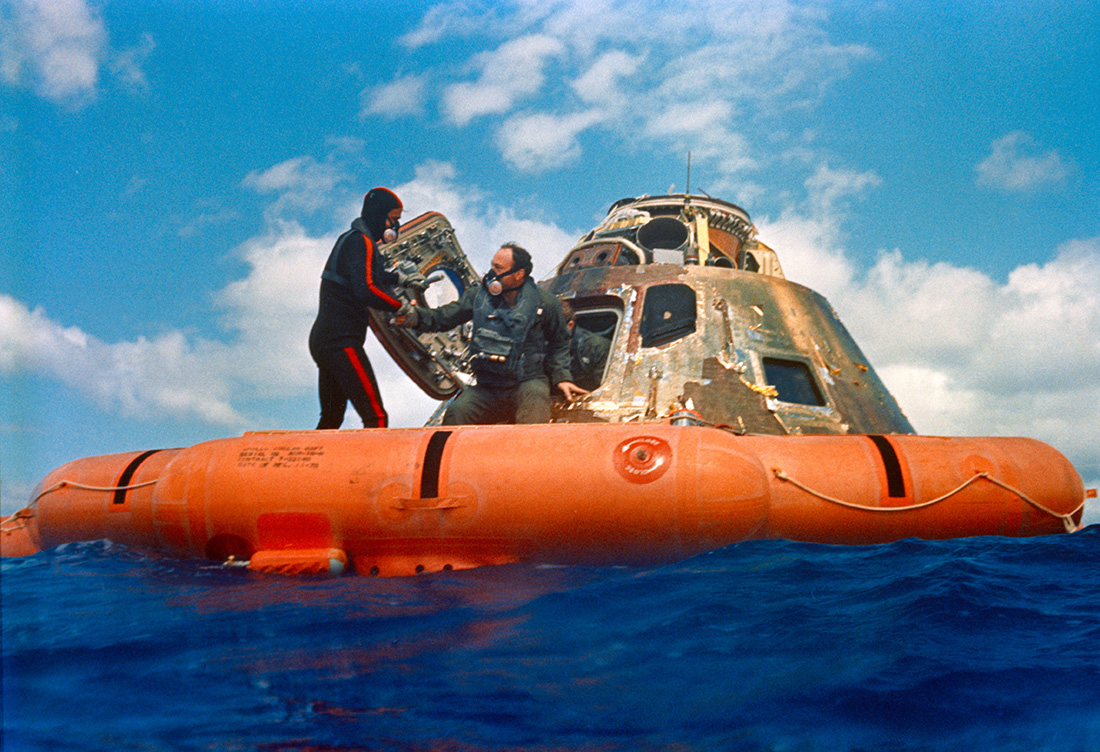
Following splashdown, astronaut Edgar D. Mitchell exits the command module with assistance from a U.S. Navy underwater demolition team swimmer. After crewmembers Alan B. Shepard Jr. and Stuart A. Roosa also exited the module, the trio was transported to the prime recovery vessel, the USS New Orleans.
Waving Hello
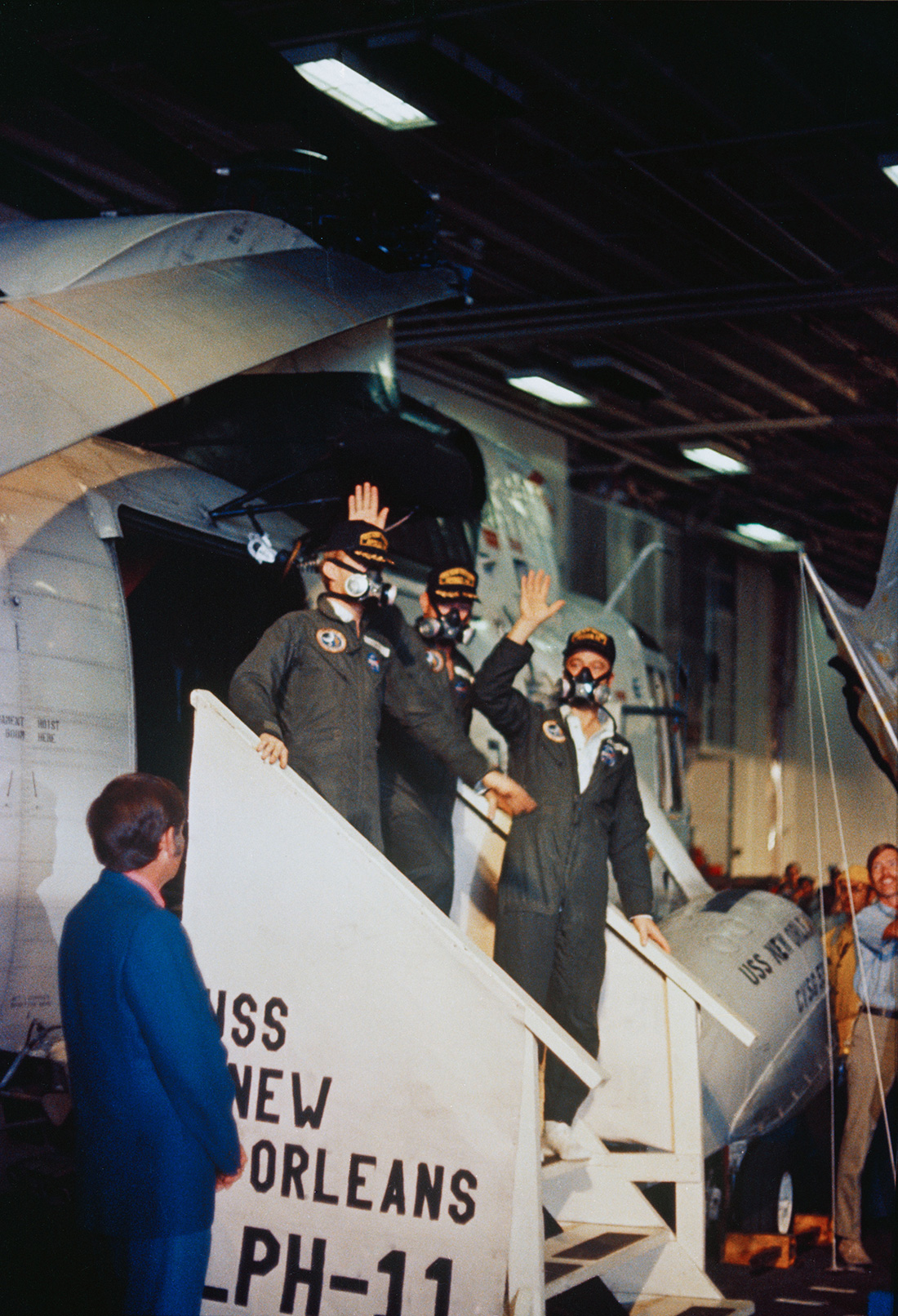
After exiting the naval helicopter responsible for retrieving the crewmen from the Apollo 14 command module, the astronauts board the USS New Orleans headed for quarantine.
Join our Space Forums to keep talking space on the latest missions, night sky and more! And if you have a news tip, correction or comment, let us know at: community@space.com.

Christine Lunsford joined the Space.com team in 2010 as a freelance producer and later became a contributing writer, covering astrophotography images, astronomy photos and amazing space galleries and more. During her more than 10 years with Space.com, oversaw the site's monthly skywatching updates and produced overnight features and stories on the latest space discoveries. She enjoys learning about subjects of all kinds.









